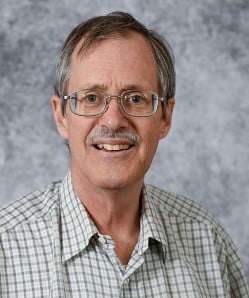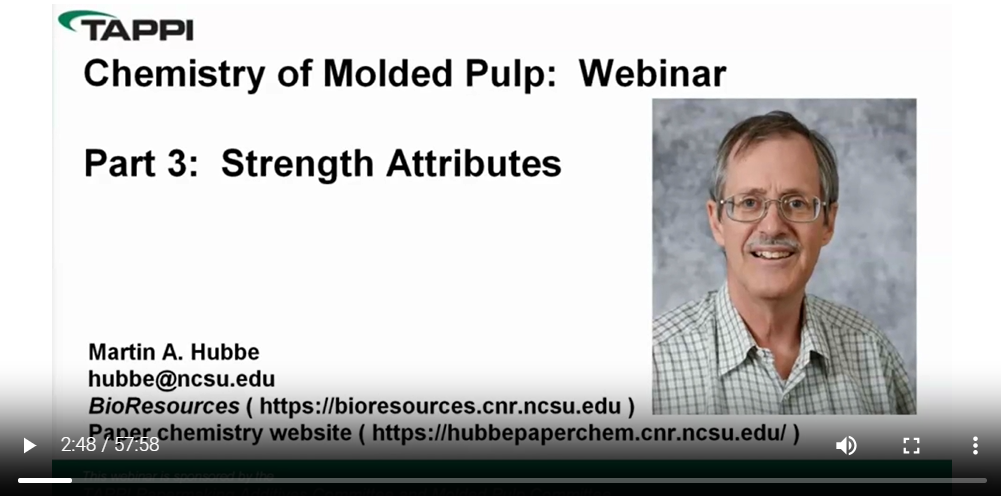 Molded Pulp, Chemical Aspects Webinar Part 3: Strength Attributes Webinar
Molded Pulp, Chemical Aspects Webinar Part 3: Strength Attributes Webinar
The strength attributes of molded pulp products can be important in such applications as the packaging of wine bottles, electronic devices, and fruit. Strength agents provide the manufacturer with a way to increase the strength of a molded pulp product without substantially increasing the density of the structure. Refining, as a means to increase product strength, not only tends to make the product denser, but it also tends to slow the dewatering rate. That will be the topic of the next webinar after this one. It is important to keep in mind that two fiber components – lignin and hemicellulose – both can contribute to strength. Because the duration of the drying process for molded pulp products is often long, in compared to conventional papermaking, there is relatively more opportunity for the lignin and hemicellulose to soften, and thus contributing to bonding. The webinar will also consider starch products and glyoxylated polyacrylamide (gly-PAM) as means to increase product strength.
Speaker: Martin Hubbe, North Carolina State University
Martin Hubbe, born in the papermaking town of Millinocket, Maine, earned a Masters degree at the Institute of Paper Chemistry (Appleton, WI, 1979), and a Ph.D. in chemistry at Clarkson University (Potsdam, NY, 1984). After a total of 15 years in corporate research (at American Cyanamid Corp., then International Paper), Hubbe joined North Carolina State University in 1998. As Professor and Buckman Distinguished Scientist, Hubbe teaches and conducts research related to the colloidal chemistry of cellulosic materials, with a particular focus on papermaking wet-end chemistry. Hubbe has conducted research related to paper strength, electrokinetic tests, flocculation, and dewatering. He also has chaired TAPPI’s “Introduction to Wet-End Chemistry” short course and conducted university courses for on-campus students and distance-education. The peer-reviewed scientific journal BioResources, which he co-founded and edits with Dr. Lucia, currently publishes more scientific articles than any other publication devoted to the materials science of paper and wood.
Maine, earned a Masters degree at the Institute of Paper Chemistry (Appleton, WI, 1979), and a Ph.D. in chemistry at Clarkson University (Potsdam, NY, 1984). After a total of 15 years in corporate research (at American Cyanamid Corp., then International Paper), Hubbe joined North Carolina State University in 1998. As Professor and Buckman Distinguished Scientist, Hubbe teaches and conducts research related to the colloidal chemistry of cellulosic materials, with a particular focus on papermaking wet-end chemistry. Hubbe has conducted research related to paper strength, electrokinetic tests, flocculation, and dewatering. He also has chaired TAPPI’s “Introduction to Wet-End Chemistry” short course and conducted university courses for on-campus students and distance-education. The peer-reviewed scientific journal BioResources, which he co-founded and edits with Dr. Lucia, currently publishes more scientific articles than any other publication devoted to the materials science of paper and wood.

